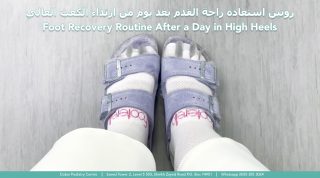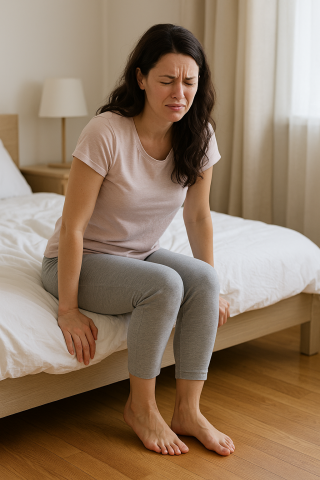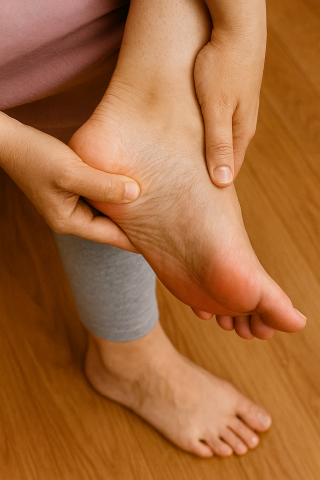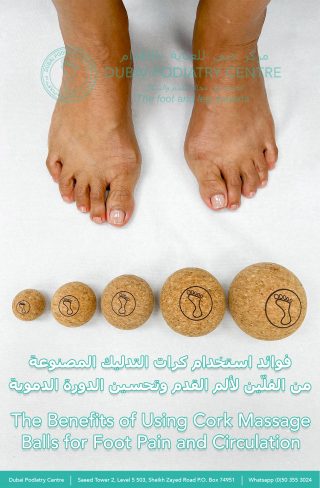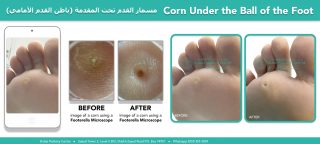بقلم: ميشيل تشامبلين، كبيرة اختصاصيي طب الأقدام – مركز دبي لطب الأقدام
تُعدّ الأظافر المغروسة في الجلد من المشكلات المزعجة التي قد تؤدي إلى التهابات وآلام شديدة إذا لم تُعالج بالشكل المناسب. ولحسن الحظ، يوجد حل دائم يمكن الحصول عليه من خلال الرعاية المتخصصة بطب الأقدام.
لماذا تتكوّن الأظافر المغروسة في الجلد؟
في بعض المرضى، تكون بنية الظفر نفسها سببًا في ميله للنمو داخل الجلد. فعلى سبيل المثال، عندما يكون لوح الظفر أعرض من عرض الإصبع – كما هو الحال في ازدحام الأسنان داخل فك صغير – لا يكون هناك متسع كافٍ له لينمو بشكل طبيعي.
الظفر المسطّح أو المروحي الشكل، الذي يتّسع باتجاه طرف الإصبع، غالبًا ما يسبّب حالات شديدة من انغراس الظفر. وبالمثل، عندما ينحني الظفر إلى الداخل ويصبح مقعّر الشكل، تبدأ حوافه في غرز نفسها داخل الجلد المحيط، مما يسبب ضغطًا وألمًا شديدين.
عندما لا يكون القصّ كافيًا
على الرغم من أن القصّ الطبي المنتظم والعناية بالقدم يمكن أن يخفّفا من المشكلة، إلا أنهما لا يحلانها جذريًا. فبما أن الظفر يستمر في النمو بنفس الشكل المشوّه من الجذر، فإن القصّ يوفر راحة مؤقتة فقط. في الحالات المزمنة، يُنصح بإجراء بسيط يُعرف باسم استئصال جزئي للظفر (Partial Nail Avulsion)، وهو حل طويل الأمد.
شرح استئصال الظفر الجزئي
يُجرى هذا الإجراء تحت تخدير موضعي مخصص للاستخدام في أصابع القدم. وعلى عكس التخدير السني الذي يحتوي على الأدرينالين لتقليل تدفق الدم، يستخدم اختصاصي طب الأقدام مخدرًا خاليًا من المواد المضيّقة للأوعية للحفاظ على الدورة الدموية، إذ إن تقييدها لفترة طويلة قد يؤدي إلى موت الأنسجة.
وللسيطرة على النزيف أثناء فترة العلاج القصيرة، يتم وضع رباط ضاغط لطيف حول الإصبع، مما يجعل المنطقة شاحبة وخالية من الدم مؤقتًا لتوفير رؤية واضحة أثناء الإجراء. بعد ذلك، يقوم اختصاصي الأقدام بإزالة الجزء المغروس فقط من الظفر مع ترك الجزء السليم كما هو.
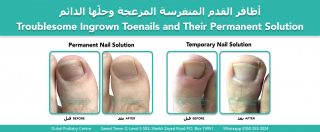
منع عودة نمو الظفر المغروس
إذا لم يُعالج الجذر بعد إزالة الجزء المصاب، فسيعود الظفر للنمو بنفس الطريقة الخاطئة. ولمنع تكرار المشكلة، يضع الطبيب مادة كيميائية تُعرف باسم الفينول (Phenol) على جذر الظفر المكشوف، وهي عملية تُعرف باسم الفينولايزيشن (Phenolization).
يقوم الفينول بكيّ الجذر كيميائيًا لمنع نمو الظفر مرة أخرى، مع تقليل احتمال تشكل ندوب. أما الإزالة الجراحية الكاملة للجذر فقد تسبب تندبًا دائمًا، ومع مرور الوقت قد لا تمنع النمو بشكل كامل.
التعافي والعناية بعد الجراحة
يسبب الفينول حرقًا كيميائيًا طفيفًا يؤدي إلى تفاعل التهابي مؤقت يُعرف باسم “توهّج الفينول”، بالإضافة إلى إفراز بسيط لِمادة لزجة من الأنسجة أثناء الالتئام – وهذا أمر طبيعي.
خطر العدوى منخفض جدًا عند اتباع تعليمات العناية بعد العملية. حيث يقدّم اختصاصيو الأقدام ضمادات معقّمة ومحاليل مطهّرة ومتابعة دقيقة لضمان شفاء الأنسجة بشكل صحي.
نطاق الممارسة والخبرة
تُعتبر إجراءات الاستئصال الجزئي أو الكلي للظفر المعيار الذهبي لعلاج حالات الأظافر المغروسة المزمنة. يقوم اختصاصيو طب الأقدام بهذه الإجراءات بشكل روتيني، وهم مدرَّبون عليها تدريبًا متخصصًا ضمن نطاق ممارستهم المهنية.
في دولة الإمارات العربية المتحدة، تُدرج وزارة الصحة ودائرة الصحة هذه الإجراءات بوضوح ضمن نطاق ممارسة اختصاصي طب الأقدام، مما يضمن حصول المرضى على رعاية آمنة ومنظَّمة واحترافية.
للمزيد من المعلومات أو لحجز موعد، يُرجى الاتصال على:
📞 +٩٧١ ٤ ٣٤٣٥٣٩٠
📱 واتساب: ٩٧١٥٠٣٥٥٣٠٢٤


